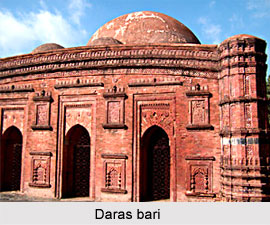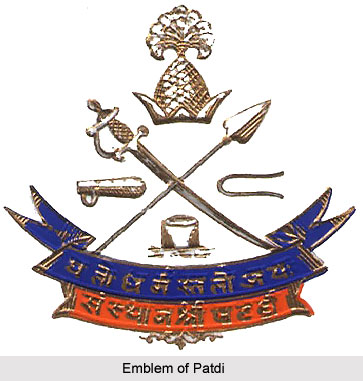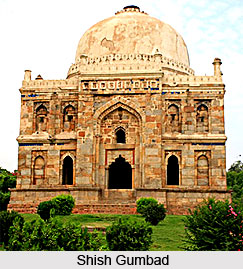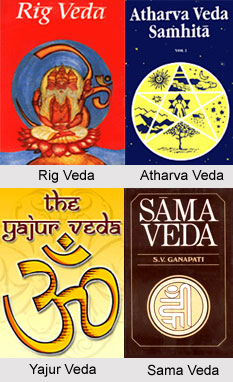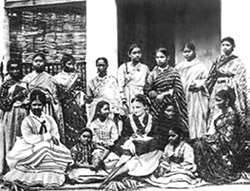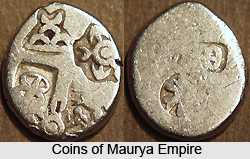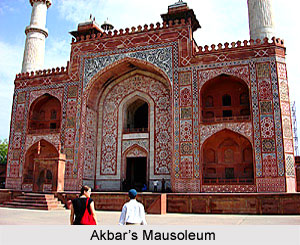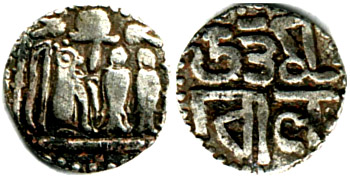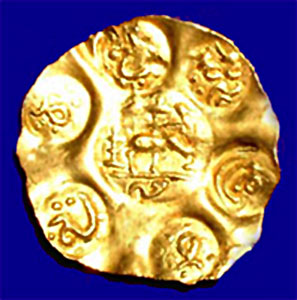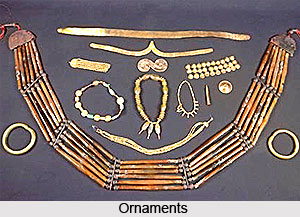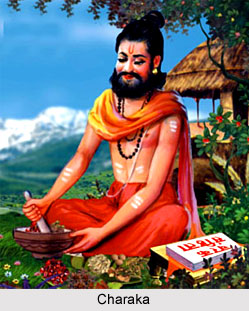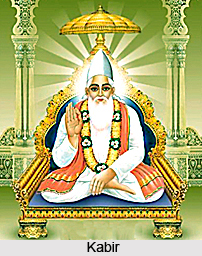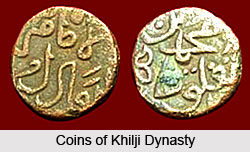It cannot be definitely said as to who were the rulers in Magadha before the Guptas.
Some of the views of the scholars can be described below:
The rule of the Satavahanas
Dr. Dandekar is of the view that Magadha formed the part of the Satavahana empire. In support of his view he points out that the Puranas mention that the Satavahana will cover the earth. He further points out that a coin indicates this fact. This coin was of the Satavahana found at a place called Bhita which is seven miles away from Allahabad. Moreover a coin of the Satavahanas discovered in Nalanda also proves the statement.
This arguments given by Dr. Dandekar in support of his views do not seem to be correct and reliable. One coin found near Allahabad and one at Nalanda are not sufficient to come to this conclusion. The description of the Puranas is very vague. Last but not the least, the Satvahanas are referred as `Dakhina path pati` and `Triyasamudratiya pati vahan.`
The rule of the Lichchhavis
Dr. Mookerjee is the supporter of the view which is based on an inscription of Nepal king Jaidev of eight century which refers twenty-three generations earlier. One Supushpa Lichchhavi was born in Pushppura i.e. Pataliputra. Chandra Gupta I got the kingdom of Magadha by marrying a Lichchhavi princess.
This view also does not seem to be correct and the inscription of Jaideva may be merely eulogistic. Moreover, receiving of the kingdom of Magadha by Chandra Gupta through matrimonial alliance appears to be the product of sheer imagination.
The rule of the Murundas
Sri Pramod Chandra Bagchi is of the view that before the Guptas, Murundas ruled in Magadha. And the time was the second and third centuries A.D. In support of his view he points out that in the geography of ptolemy it has been clearly mentioned that the Murundas ruled on the right bank of river Ganges in the east of India. Moreover, according to Chinese sources a Chinese ambassador came to a capital of India in 227 A.D. and this capital was probably Pataliputra.
This view also does not seem to be correct. The scholars point out that the Indian king referred to above was the Murunda king of the western India.
The rule of the Kushanas
According to Dr. R.D. Bannerji and certain other scholars the Kushanas ruled in Magadha before the rise of the Guptas. Many scholars support this view. These scholars point out that the Guptas had established their rule by driving away these Kushanas. But some scholars do not agree with this view and point out that the fall of the Kushanas had already taken place before the rise of the Kushanas.
The rule of the Kota-Kula
On the basis of the mention of Kota-kula in Prayag Prasasti, Dr. Jayaswal expresses the view that there was the rule of the Kota-Kula in Pataliputra before the rise of the guptas. Sundervarman and Kalyanvarman referred to in `Kaumudi-mahotsava` were probably the kings of Kota-kula.
Many scholars have criticized this view. They point out that the meaning of the Prayag Prasasti and historical significance of `Kaumudi mahotsava` are both doubtful.
The rule of the Maukhary dynasty
According to this view, Sundervarman and Kalyanvarman were the rulers of Magadha and belonged to Maukhary dynasty. In support of this view, the mention of Chandra Valli inscription is made which makes the reference of the defeat of the Moyravarman in the third century A.D. This goes to show that there was the rule of Maukhari dynasty in the third century A.D.
However, it is pointed that the tribes mentioned in the Chandravalli inscriptions and the tribes of the western India are in no way related with the eastern India. Hence Kalyanvarman and Sundervarman cannot be said to belong to Maukhari dynasty.
Thus it cannot be definitely said as to who were the rulers of Magadha before the rise of the Gupta. The scholars differ in this respect and every view has some or the other shortcoming or weak points on account of which this question is still open to further enquiry and research.


